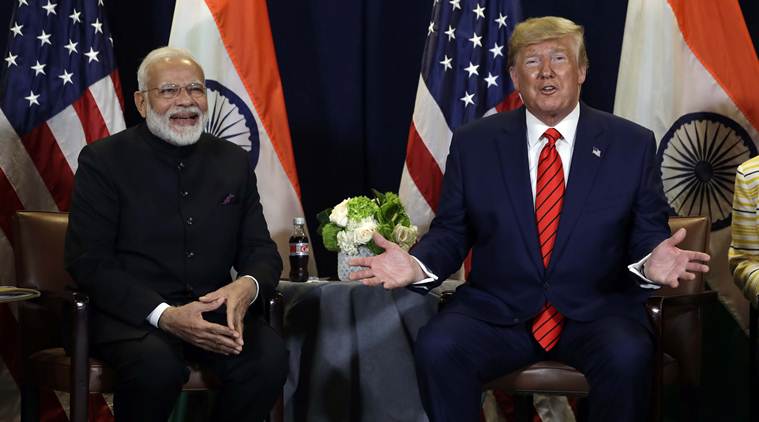India Reacts Strongly to Donald Trump’s ‘Dead Economy’ Remark and Sudden 25% Tariffs: Economic and Political Fallout Deepens
India is reeling from a wave of shock and indignation following former U.S. President Donald Trump’s inflammatory remarks about its economy and the abrupt imposition of 25% tariffs on Indian exports. Trump’s comment, describing India’s economy as “dead,” coupled with a new set of steep tariffs, has triggered widespread dismay across Indian political, business, and public circles. The announcement, made via his Truth Social account on July 30, has disrupted trade expectations and sent ripples through key industries that heavily rely on U.S. markets.
In his posts, Trump not only slammed India for its trade practices, labeling them as “strenuous and obnoxious,” but also warned of potential penalties over India’s ongoing defense and energy dealings with Russia. The following day, his tone grew even harsher as he reiterated his disapproval of India’s alignment with Russia and branded the Indian economy as “dead.” These statements came at a time when both nations were believed to be progressing in trade discussions, and now, the sudden rollout of 25% tariffs as of Friday has significantly altered the diplomatic and trade dynamics between the two countries.
The reaction in India has been swift and intense. Government officials are reportedly reviewing the implications and considering options to recalibrate the country’s response, while industry leaders, exporters, and citizens are expressing disappointment, frustration, and concern. On social media, Indian users criticized Trump’s aggressive rhetoric and questioned Prime Minister Narendra Modi’s silence in the face of such direct economic and diplomatic hostility. Many see this as a test of India’s foreign policy resilience and its ability to stand firm on global platforms.
The economic impact is already being felt on the ground. For instance, companies like Kanodia Global, which derive over 40% of their revenue from the U.S. market, have begun facing pressure from American buyers seeking tariff-related discounts. Exporters in sectors such as apparel, textiles, and jewelry have raised concerns over the competitiveness of Indian goods, especially as countries like Pakistan and Bangladesh received comparatively lower tariff rates — 19% and 20% respectively. This disparity has only deepened the frustration among Indian businesses, particularly those in manufacturing hubs like Tirupur and Surat.
Sabyasachi Ray, executive director of the Gem and Jewelry Export Promotion Council, expressed worry over the uneven treatment and confirmed that the council would urge the government to negotiate better terms. The news has also reignited criticism of Trump’s earlier efforts to mediate India-Pakistan relations, including his claim of brokering a ceasefire, which some Indians view as an attempt to dilute India’s diplomatic and strategic superiority in the region.
Trump’s unpredictable moves, including the announcement of a U.S.-Pakistan trade pact on the same day, have further strained perceptions in India. Experts believe the tariffs are part of a calculated negotiating tactic aimed at unsettled trade issues. Public policy analysts, like Rohit Kumar from The Quantum Hub, noted that Trump’s sudden announcement feels more like a knee-jerk reaction than a strategic policy decision. With no formal agreement yet reached, and India’s hopes of preferential treatment dashed, the current situation reflects a 180-degree shift from the camaraderie once seen between Trump and Modi, who he had publicly referred to as a “friend” earlier this year.
The overall trade volume between the U.S. and India stood at approximately $129.2 billion in 2024, making the U.S. India’s largest trading partner. Any disruption to this relationship is bound to have cascading effects across industries and jobs. Business leaders are warning that prolonged tariff enforcement could lead to reduced profits and even job cuts, especially in export-heavy sectors.
Despite the turmoil, there remains cautious optimism that the situation may be defused. Strategic experts like Vivek Mishra from the Observer Research Foundation believe this is a temporary storm in the bilateral relationship and that both sides have incentives to return to the negotiating table. Reports suggest India may explore increasing U.S. imports to pacify the White House and reinstate a more favorable trade relationship. Industry leaders are advocating for a balanced, win-win negotiation rather than one-sided compromises.
The latest developments underscore the fragility of international trade ties in the current geopolitical climate, especially when influenced by volatile political messaging. As India navigates the fallout, the pressure mounts on policymakers to defend the nation’s economic interests and restore strategic equilibrium with the U.S.
For video news and ongoing updates on this developing story, visit our YouTube channel THE OLIGO.

